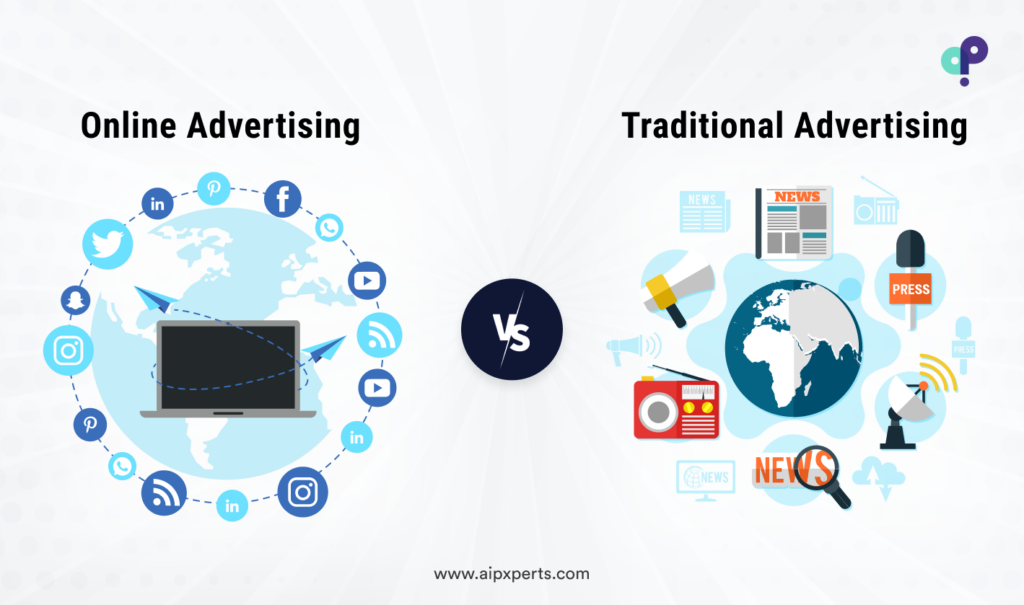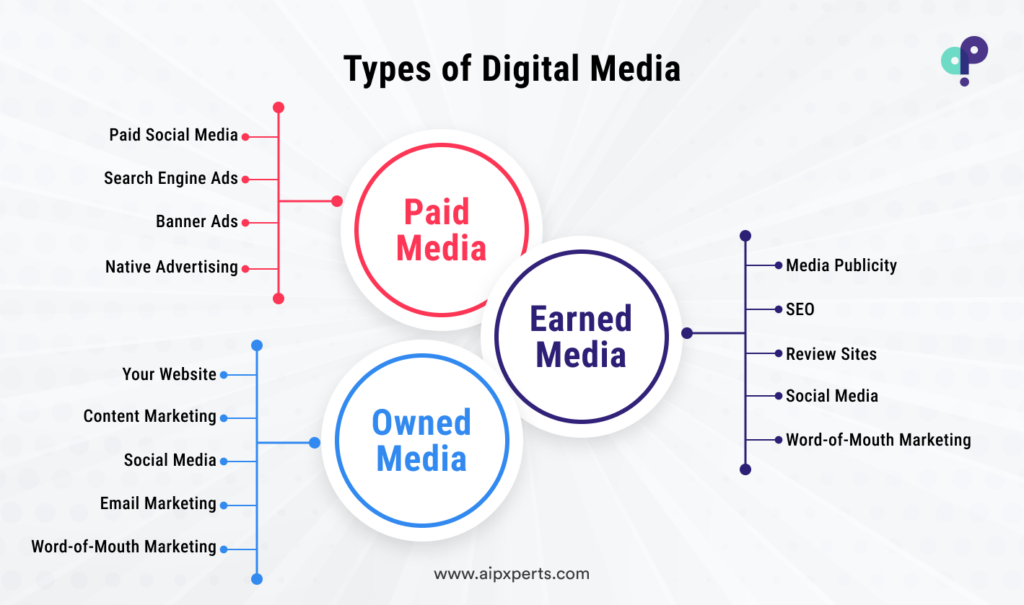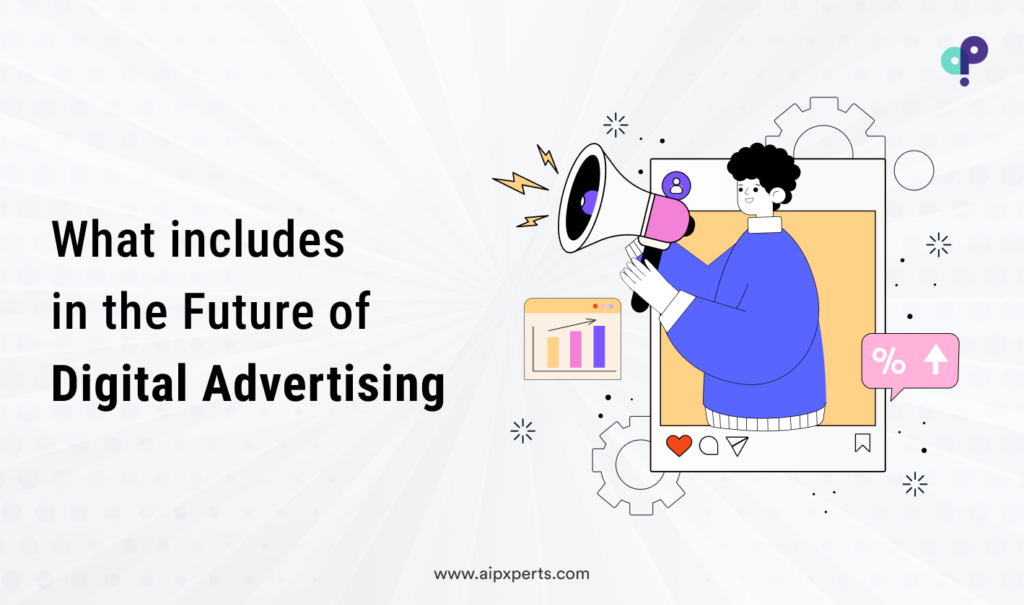Businesses must actively cultivate an online presence to succeed in today’s digital world. But simply having a website isn’t enough. To truly thrive, you need a strategic online marketing approach, and digital advertising is a powerful tool within that arsenal.
This guide equips you with the knowledge to navigate the exciting yet complex world of digital advertising. We’ll delve into key concepts, campaign strategies, and best practices to help you craft effective advertising campaigns that reach the right audience and achieve your business goals.
Understanding Digital Advertising
Digital advertising leverages online channels to promote products, services, and brands. Unlike traditional advertising mediums like print or television, digital marketing offers unparalleled flexibility, precision targeting, real-time optimization, and measurable results. It leverages a plethora of platforms and technologies to reach consumers across websites, search engines, social media, mobile apps, and more.
Online Advertising vs. Traditional Advertising
Traditional advertising encompasses offline methods of paid promotional campaigns, encompassing magazine ads, billboard ads, posters, TV spots, and direct mail, among others.
While the roots of advertising trace back to ancient times, the emergence of advertising as an industry began in the mid-nineteenth century. The familiar format evolved through the amalgamation of slogans with imagery, and newspapers played a pivotal role by offering advertising space to offset their expenses. Traditional advertising laid the foundation for modern revenue streams like sponsorships, the understanding of consumer psychology in marketing, and the agency model for advertising execution.

In contrast, digital advertising is a relative newcomer to the field. While it shares some fundamental principles with print advertising and may appear similar, the digital realm presents a distinct landscape. Digital advertisements can be interactive, featuring clickable buttons as CTAs that guide users to landing pages for further information or purchases.
Further, digital ads can target specific segments of a brand’s audience, particularly when tailored to user shopping or browsing behavior. Additionally, they provide more comprehensive and immediate analytics, such as views and bounce rates. While many businesses blend traditional and online advertising, a robust digital advertising strategy is increasingly vital for success in today’s market.
What are the Benefits of Digital Marketing?
Establishing a Digital Presence offers Numerous Advantages:
- Facilitating the creation of awareness and engagement, both pre and post-sale.
- Assisting in the conversion of new customers into loyal advocates who make frequent purchases.
- Initiating word-of-mouth and social sharing, thereby reaping associated benefits.
- Streamlining the buyer’s journey by presenting relevant offers at opportune moments.
What are the types of Digital Media?
Discussing digital marketing types would be incomplete without acknowledging these three essential categories of digital media.
These categories encompass Paid, Earned, and Owned media, often referred to as PEO.

An interplay exists among these media types, emphasizing the significance of integrating campaigns, resources, and infrastructure across your multichannel strategy to achieve optimal results.
Types of Digital Advertising
- Pay-Per-Click (PPC): PPC advertising allows advertisers to bid for ad placement in search engine results or on relevant websites. Advertisers only pay when their ad is clicked, making it a cost-effective and performance-driven approach. Google Ads and Bing Ads are popular PPC platforms offering roust targeting options and comprehensive analytics.
- Display Advertising: Display ads encompass various ad formats, including banners, images, videos, and interactive media, displayed on websites, apps, or social media platforms. These ads aim to increase brand awareness, drive traffic, and generate leads. Programmatic advertising has revolutionized display advertising by automating the ad-buying process and optimizing targeting-based and real-time data.
- Social Media Advertising: Social media platforms like Facebook, Instagram, Twitter, LinkedIn, and Pinterest, with their vast user bases, offer unmatched capabilities for reaching specific audiences through targeted advertising. Advertisers can leverage demographic, behavioral, and interest-based targeting to reach their ideal audience with tailored ad content, driving engagement, conversion, and brand loyalty.
- Search Engine Marketing (SEM): SEM involves promoting websites by increasing their visibility in search engine results pages (SERPs) through paid advertising (PPC) and search engine optimization (SEO). By bidding on relevant keywords, advertisers can ensure their ads appear prominently when users search for specific terms, driving targeted traffic to their websites.
- Video Advertising: Video advertising has emerged as a compelling medium to engage audiences and convey brand messages effectively. Platforms like YouTube, Vimeo, and social media channels offer various video ad formats, including pre-roll, mid-roll, and native ads, allowing advertisers to captivate viewers with compelling visuals and storytelling.
- Mobile Advertising: With the proliferation of smartphones and mobile devices, mobile advertising has become indispensable for reaching consumers on the go. Mobile ads can take various forms, including in-app ads, mobile banners, interstitials, and video ads, delivering personalized experiences and driving conversions through location-based targeting and mobile-specific ad formats.
Strategies For Success
The world of digital marketing moves fast. Trends come and go quickly, with some experts promoting a new tactic one week and declaring it outdated the next. But here’s the key takeaway: strong digital marketing is more about core marketing principles than the latest digital tools. As digital marketing matures, it becomes clear that the fundamentals we rely on in traditional marketing still hold in the online space.
- Targeted Advertising: Effective targeting is the cornerstone of successful digital advertising campaigns. By segmenting your audience based on demographics, interests, behaviors, and buying intent, you can deliver highly relevant ads that resonate with your target market, maximizing engagement and conversions.
- Ad Campaign Optimization: Continuous optimization is crucial for maximizing the performance of your digital advertising campaigns. Monitor key metrics such as click-through rates (CTR), conversion rates, cost per acquisition (CPA), and return on ad spend (ROAS) to identify areas for improvement and refine your targeting, ad creatives, and bidding strategies accordingly.
- Conversion Tracking: Implement robust conversion tracking mechanisms to measure the effectiveness of your ad campaigns and attribute conversions accurately. Whether it’s website visits, form submissions, purchases, or app installations, tracking conversions enables you to access campaign ROI, optimize performance, and allocate budget effectively.
- Ad Budgeting: Allocate your advertising budget strategically across different channels, campaigns, and ad formats based on their performance and potential for reaching your business objectives. Test and iterate to find the optimal budget allocation that maximizes ROI while staying within your budget constraints.
- Audience Segmentation: Segment your audience into distinct groups based on various criteria such as demographics, psychographics, purchase history, and engagement levels. Tailor your ad content and messaging to address the specific needs, pain points, and preferences of each segment, enhancing relevance and driving higher engagement and conversions.
- Ad Creatives: Craft compelling ad creatives that grab attention, communicate your value proposition effectively, and compel users to take action. Experiment with different ad formats, visuals, headlines, and calls to action to find the winning combination that resonates with your audience and drives desired outcomes.
- Ad Performance Metrics: Monitor and analyze key performance metrics to gauge the effectiveness of your digital advertising efforts and identify opportunities for improvement. Track metrics such as impressions, clicks, conversions, CTR, conversion rates, CPC, and ROAS to measure campaign success and optimize performance.
- Ad Networks: Explore a diverse range of ad networks and platforms to reach your target audience across various digital channels effectively. Whether it’s search engines, social media, display networks, or mobile apps, leverage the right mix of ad networks to maximize reach, engagement, and conversion opportunities.
- Retargeting: Harness the power of retargeting to re-engage users who have previously interacted with your brand or visited your website. By serving personalized ads to these prospects across the web, you can nurture leads, drive repeat visits, and increase conversion rates, ultimately maximizing the ROI of your digital advertising campaigns.
- Ad Fraud Prevention: Protect your ad spend and campaign performance by implementing robust measures to prevent ad fraud, including click fraud, impression fraud, and bot traffic. Work with reputable ad networks, employ fraud detection tools, monitor suspicious activity, and regularly audit your campaigns to mitigate the risk of fraudulent activities and ensure ad spend integrity.
Digital Advertising Trends
The future of digital advertising is here! Stay ahead of the curve by diving into these key trends that are poised to reshape the industry and open doors to exciting new possibilities.

- Native Advertising: Seamless integration of branded content into the user experience of digital platforms for enhanced relevance and engagement.
- Video Advertising: Continued growth of video content consumption across digital channels, driving demand for video ad formats and immersive storytelling.
- Mobile Advertising: Increasing dominance of mobile devices as primary platforms for intent access and content consumption, necessitating mobile-first advertising strategies.
- Programmatic Advertising: Adoption of programmatic technologies for automated ad buying, targeting, and optimization across digital channels for greater efficiency and scalability.
- AI and Machine Learning: Leveraging artificial intelligence and machine learning algorithms to personalize ad targeting, optimize campaign performance, and deliver hyper-targeted ad experiences.
- Privacy and Data Regulations: Heightened focus on consumer privacy and data protection regulations, impacting ad targeting, tracking, and personalization practices.
- Interactive and Immersive Ads: Rising popularity of interactive and immersive ad formats such as AR/VR ads, playable ads, and shoppable ads for enhanced user engagement and interactivity.
Conclusion
Digital advertising offers immense potential for businesses of all sizes. By understanding the core concepts, meticulously crafting targeted campaigns, and staying updated on the latest trends, you can leverage this powerful tool to achieve your online marketing goals.
Ready to take the plunge? Consider exploring online resources offered by advertising platforms like Google Ads and social media platforms to delve deeper into specific campaign setup and optimization techniques. Remember, effective digital advertising is an ongoing process, so be prepared to test, analyze, and refine your approach for maximum impact.


